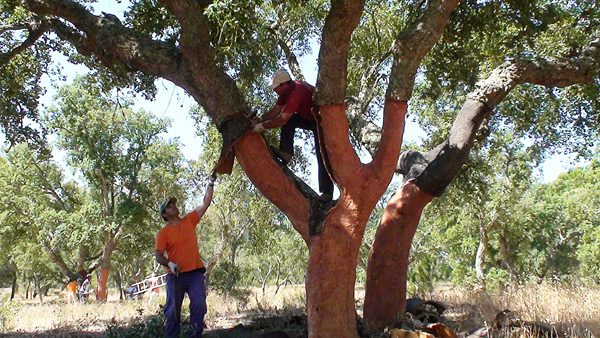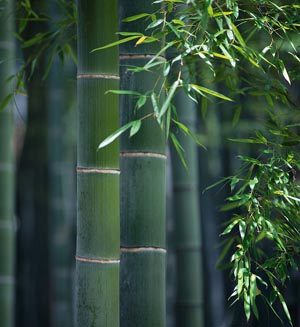
You don’t have to compromise when it comes to choosing a floor that contributes to the long-term sustainability of our environment, economic development and your health. In fact, there is a great deal of compromise, or dare I say selfishness, when it comes to the making a sustainable choice. The blinders are put on, the wallet is opened and often a floor is installed that, in truth, did come from a mountain top that was clear cut, or may have been engineered with toxic chemicals, and all because a salesperson doesn’t tell the true story. In Hawaii the phrase “talk story” means to chat with friends or to share conversation with friends, so if I may, let’s “talk story,” relax a little and consider what is right and practical as well.
If looking for a sustainable flooring choice, consider the environmental impact, who is impacted economically and socially, and whether it contributes to healthy living.
Ask your hardwoods supplier precisely where their stock is coming from. The key is to be honest with yourself and expect honesty from your suppliers. Everyone knows that a grand old oak tree takes more than a generation to mature. Consider the history of your materials.
Though reclaimed wood may cost a little more, consider the work involved to remove nails and debris and what is required to thoughtfully mill it. The beautiful character, depth, strength and stability from reputable suppliers can be worth every penny. If the price tag challenges your budget, consider a character-grade versus a clear-grade material. You might be surprised at how many options you have. Customizing your floor with consideration to grade, board lengths and finish can be very rewarding and then you can really “talk story” about what history is beneath your feet.
Another option is to select a floor that is sustainably harvested, grown and processed in central Appalachia, which creates a positive impact on the people and forests of economically distressed communities. Carefully working with select tracts of land and landowners assures the protection of local forests and keeps jobs within the region. These local hardwood products are often certified by the Forest Stewardship Council, the gold standard in forest and wood product certification. According to FSC, about 80 percent of hardwoods are harvested illegally.

Bamboo can be another environmentally sound choice. I say “can be” as there is good reason to be wary of the wide array of bamboo products on the market. There is only one company that I am aware of that controls a certified facility maintaining quality from start to finish, controlling the raw materials from harvest to final production. If a supplier cannot provide information about the facility or speak to the health of the product, I would not recommend installing it.
Strand-woven bamboo or “woven” bamboo uses 100 percent of the stalk, utilizing all of the raw materials. It is significantly stronger than many hardwoods on the market, and since bamboo is 100 percent renewable and cut by hand, no damage needs to come to the ecosystem and no forest or land needs to be destroyed.
It is up to the buyer to be discriminating. Look for mature 5- to 6-year-old growth material, as young growth is softer and has presented problems in the past. Look for bamboo that has no added urea-formaldehyde, manufacturing plants that use unique natural plant dyes if it is a stained product, and a company that controls the manufacturing process. Suppliers should welcome the conversation, be informed about the product, and be willing to look into real questions with real environmental impact.
If looking at a floor with adhesives, whether it be a strand-woven product or an engineered floor, ask for U.S. tested and certified small-chamber results. This test measures an air sampling for formaldehyde emissions under pressure in a small chamber for a period of time. You should be comfortable with the results and your supplier should be able to get these results for you. The threshold for formaldehyde is .05 parts per million. The lower that number, the better the resulting indoor air quality.
Cork is another increasingly popular sustainable flooring choice. Things to look for with cork include: density, finish and thickness. There are 100-year-old buildings with cork floors — most significantly, the Library of Congress in Washington, D.C. Cork is resilient, quiet and warm, is a natural fire inhibitor, and serves as an insect repellant.
The cork tree is amazing. Coming from the coastal regions of the Mediterranean with an average life span of 120-200 years, the bark is regenerative as the trees are not cut, maintaining a stable eco-system. Endangered species are protected within the cork tree forests and regulations on the harvesting of cork are strict. Harvesting is often steeped in tradition with several generations of families working with the cork forests. Do look for manufacturers within the United States, which will provide jobs within the region as well as minimize transport costs.
Once you have selected flooring material, a reputable installer is critical to the success of your project. Without consideration to the subfloor, moisture issues, acclimation, product knowledge and craftsmanship, you could be asking for problems. Reduce your stress level and put your confidence in insured professionals who know their business.
It’s a great idea to take some time to “talk story” with those that ask questions of their suppliers, the mills, local environmental organizations, those that study energy analysis, those that care enough to learn about the true labor conditions of a manufacturing plant and, of course, the old-timer who walked the upper story of an old mill.
Many of the questions discussed here can be applied to other types of flooring materials such as concrete, vinyl, tile, carpet and other natural fibers and composites. Our green-building community has professionals for all phases of building design. Take advantage of their knowledge and services.
Catherine Silver is the owner of The Arch, Architectural Finishes, Flooring and More. She has degrees in interior design from Michigan State University and elementary education from UNCA. Silver opened The ARCH in 2004 offering sustainable-building products, natural finishes and design, masonry and workshop offerings.

